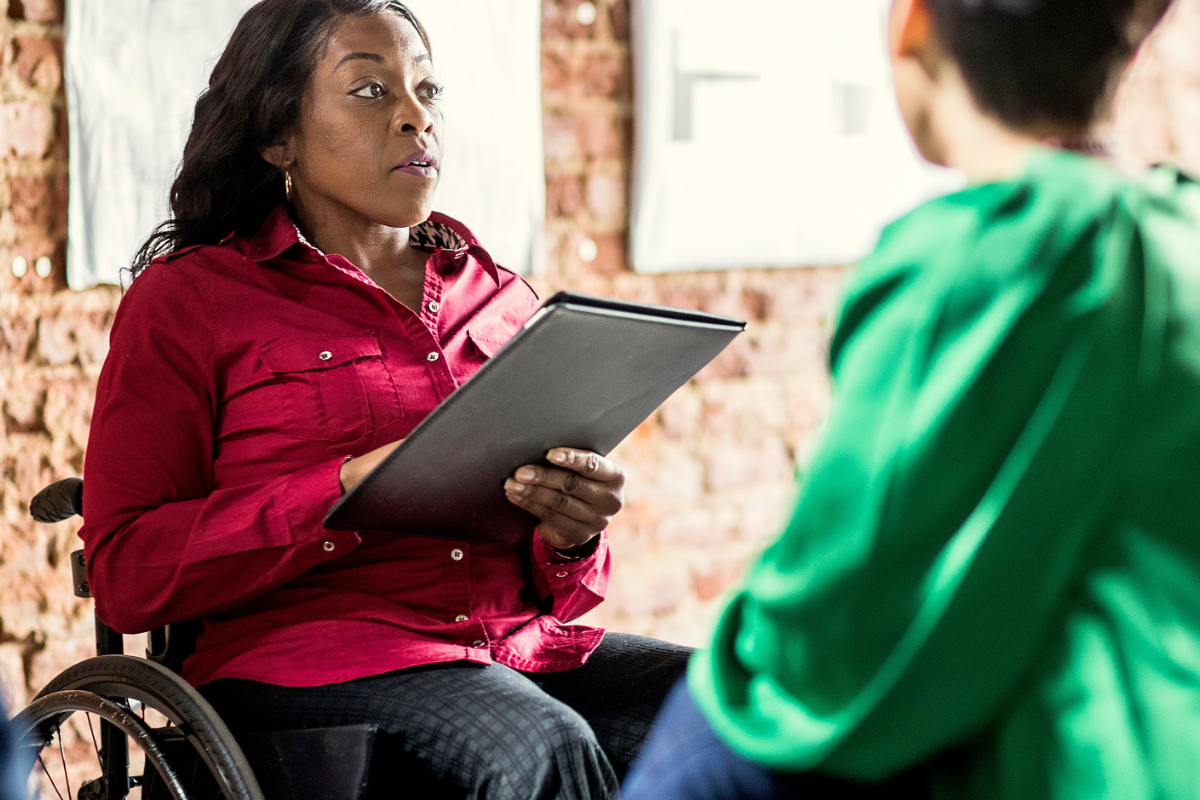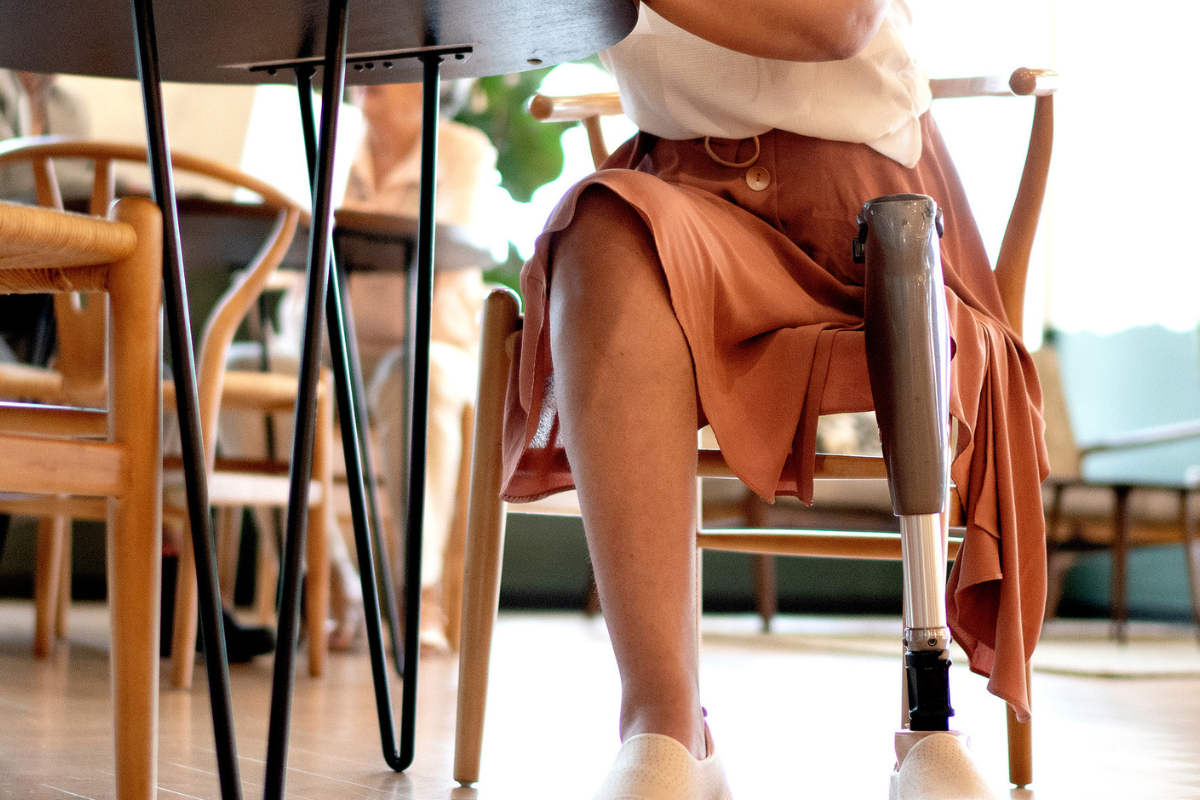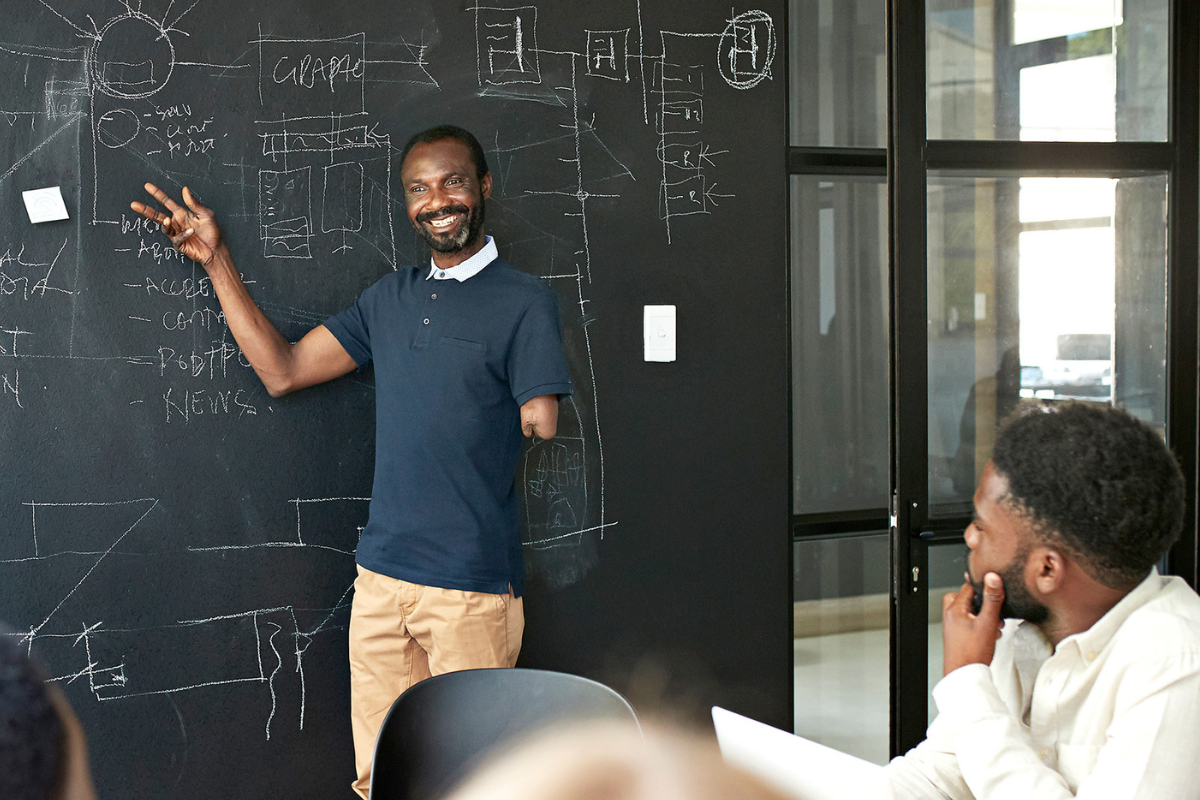In 2001, my life took an unexpected turn when an accident caused me to fracture my fifth cervical vertebra, leaving me living as a quadriplegic and suddenly navigating a world that was not designed with my needs in mind. Simple tasks became enormous challenges and I faced barriers at every turn.
Returning to the same job, or transitioning to a new career for those who are unable to continue in their previous job duties due to a disability, can be a difficult journey for some. Those who do return to their previous jobs often experience a mixture of anxiety and relief as they adjust to doing the job with their new physical limitations.
But for those facing the reality that they can no longer perform their previous job duties, this transition marks a pivotal moment of reevaluation and adaptation.
Before my accident I was working as an indoor rock climbing instructor and studying to be a middle school PE teacher. After my accident I was told by the university that I was no longer eligible to complete my degree.

Pursuing a career with a disability brings unique challenges that are often overlooked.
At the time, it was a shock because everything I had ever strived for was so far out of reach. But throughout my career, and especially as COO, I’ve been able to change my path and the path of those who come after me by championing accessibility in the workplace.
In my work as Senior Advisor for Access and Advocacy at Spinal Life Australia, a charity that provides assistance, specialist therapies and support to people with spinal cord injuries and other physical disabilities, I have been given the platform to use my personal experience to advise organisations, including our own, on how to support people in the ways that matter most to them as individuals.
I have now been appointed to a new role as COO at Sporting Wheelies, which provides opportunities for people of all abilities to enjoy recreational activities and sport. In this role I will be able to promote a more inclusive community and ensure that people with disabilities are not prevented from activities that bring them joy.
Pursuing a career with a disability brings unique challenges that are often overlooked. The complexities of wanting to excel in your career but also needing added flexibility to do so vary greatly depending on the requirements of the job itself.
But there are some key themes that all workplaces can benefit from being aware of: Now in my role as CEO, I’m reflecting on my career, offering insight into the barriers I’ve faced along the way and sharing advice on how to overcome them.
Accessibility
Having a disability makes everything, every day, a little harder. Sometimes it can be a lot harder. Throughout my career, one of the biggest challenges I’ve faced in different workplaces has been the lack of accessibility.
Not all buildings are equipped with ramps or elevators, and even if a building is technically accessible, it may not have been designed with the needs of wheelchair users in mind. Narrow doorways, high counters, inaccessible restrooms, and inaccessible office furniture are just some of the physical barriers that wheelchair users face on a daily basis, making it difficult to access certain areas.
Stereotypes, misconceptions, prejudices
Stereotypes, misconceptions and prejudices (whatever you want to call them) exist in the workplace, leading to employers having questions and concerns about people with disabilities and their ability to perform their jobs.
As an employee with a disability, I have felt throughout my career that I had to prove something. However, I am now fortunate to have a career in which I work in a place that understands the challenges and has very supportive colleagues and managers. Unfortunately, not everyone has that experience.
Regardless of what people think, there is still a stigma attached to living with a disability, and it can be easy for employers to dismiss you as “too hard to employ.”
discrimination
Worryingly, more than two in five working-age disabled people who experienced discrimination in the past 12 months cite their employer as the most likely cause (40%), followed by work colleagues (35%).
“The fact that such a large proportion of discrimination comes from the workplace itself is particularly disturbing. The workplace should be a space where people are treated with dignity and respect, regardless of their background or abilities. But for many people with disabilities, this is not the reality they face.”

There is still a stigma attached to living with a disability, and it is common for employers to dismiss you as “too hard to employ.”
According to the Australian Institute of Health and Welfare, Australians with a disability are twice as likely to become unemployed as people without a disability, and unfortunately are more likely to remain unemployed for longer periods of time.
Hiring people with disabilities is not only the right thing to do, it also has good business benefits: it improves the service your business can provide to customers and allows you to present a unique perspective to others.
Flexibility
Getting through a day with a disability requires careful planning and perseverance. This preparation is crucial for people with disabilities during work events, such as meetings, errands, and outings. Tasks that others take for granted, like arriving at a destination or carrying certain items, often require additional planning and preparation.
When something outside of your control causes you to not meet the expectations of your coworkers or superiors, it can cause stress and disappointment if not handled with understanding and consideration.

If you’re a business owner and you’re not accessing this important segment of the population, you’re missing out on an untapped recruiting pool for your business.
Attending an event for people with physical disabilities often requires a series of special measures, each of which requires careful consideration, from transportation to venue accessibility. Patience is a virtue not only for employees with disabilities, but also for event organizers and their companions. It takes time to ensure that ramps are installed, elevators are working, and designated parking spaces are available.
You also need to consider your schedule. Morning routines for people with physical disabilities often take hours. For me, my morning routine can take up to four hours. It doesn’t happen every day, but it happens often. That means it takes me four hours to even get out of the house.
Add to that the commute, a full day of work, and then my evening routine back in bed, with family commitments in between, and you have a very long day. Breakfast meetings and other early wake-ups, despite my best efforts to attend, make the day just that little bit harder, resulting in earlier mornings and waking up at 3 instead of 5, making the day just that little bit longer.
What does the future hold?
We know that roughly one in five Australians are living with a disability, so if you’re a business owner and you’re not accessing this important part of the population, you’re missing out on an untapped talent pool for your business.
Making this change doesn’t necessarily require physical adjustments — often all it takes is a shift in mindset and a commitment to inclusivity at every level of the organization. This is where the importance of leadership comes into play.
The enormous benefits to a workplace of employing and including people with disabilities in the workforce far outweigh the challenges employers may face.
Diverse teams generally tend to be more innovative and successful, with accelerated problem-solving approaches, increased learning opportunities, and higher morale.
Meaningful change in the workplace ultimately comes from the top down: leaders within an organization must set the “tone” of inclusion and create a culture where people with disabilities are valued and respected.
Fortunately, there are signs of progress. Across Australia, and around the world, businesses are beginning to recognise the importance of diversity and inclusion and are taking steps to make their work environments more accessible for people with a disability.

Leaders within organizations are responsible for setting the “tone” for inclusion and creating a culture where people with disabilities are valued and respected.
From implementing flexible working arrangements to providing facilities such as assistive technology, there are many ways employers can create a more inclusive workplace.
To truly achieve more inclusive workplaces, we need to continue to advocate for change at all levels of society, and this means not only addressing physical barriers, but also challenging the attitudes and assumptions that perpetuate discrimination against people with disabilities.
It means holding leaders accountable and demanding that they prioritize accessibility and inclusion within their organizations.
Translating change in attitudes into action is crucial, and we are encouraging leaders and executives across Australia to take part in our annual CEO Wheelie Challenge, by spending a day in a wheelchair at work. The challenge aims to spark wider discussion about fostering a more diverse, inclusive and accessible work environment for people with disability.
We invite CEOs, executives and leaders across the country to register for the CEO Wheelie Challenge on August 30, 2024 to experience the everyday challenges faced by wheelchair users, understand first-hand what it’s like to have a disability and identify areas for improvement in their business.
We all need to work together to create a world where everyone has the opportunity to thrive, regardless of ability.

